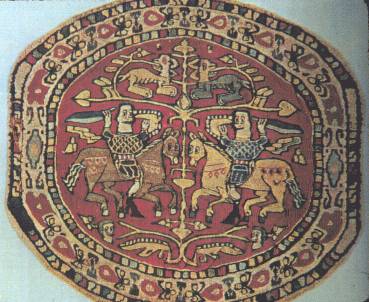Usòrò:Coptic rondel.jpg
Appearance
Coptic_rondel.jpg (369 × 302 pixel, ívù akwukwo orunótu: 29 KB, MIME nke: image/jpeg)
Ịta nke usòrò
Bìri èhì/ogè k'ị hụ òtù ụ̀fa dị̀ m̀gbè ahụ̀.
| Èhì/Ogè | Mbọ-aka | Ógólógó na asaá | Òjìème | Nkwute | |
|---|---|---|---|---|---|
| dị ùgbu â | 03:17, 18 Jenụwarị 2009 |  | 369 × 302 (29 KB) | Tillman | {{Information |Description={{en|1=Wool on linen textile decorative rondel with two horsemen, 6th c. A.D. Syrian or Egyptian Coptic. (New York: Copper Union Museum). Above are lions flanking a hom. Design was copied from a silk textile. }} |Source=http://w |
Ojiji faịlụ
Ihe ndị na-eso ihe eji Ihu akwụkwọ eme na faịlụ a:
Ejiji failụ zụrụ ọha
Wikis ndi a edeputara na eji kwa failụ a:
- Ihe eji na ar.wikipedia.org
- Ihe eji na arz.wikipedia.org
- Ihe eji na ca.wikipedia.org
- Ihe eji na en.wikipedia.org
- Ihe eji na es.wikipedia.org
- Ihe eji na fa.wikipedia.org
- Ihe eji na it.wikipedia.org
- Ihe eji na ru.wikipedia.org
- Ihe eji na uk.wikipedia.org

